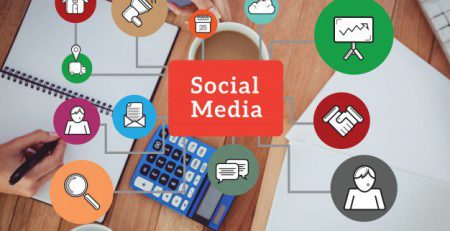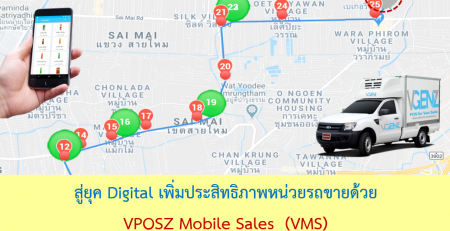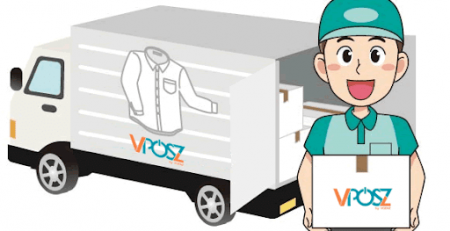Customer Relationship Management (CRM) to SME Business
Today, we will talk about customer relationship management system or CRM (Customer Relation Management) to SME Business.
Customer Relationship Management (CRM) to SME Business
1. Sales Revenue Increase Focus on building good relationships with customers. To make customers loyal. Use of goods or services (Customer Loyalty). Applying CRM (Customer Relationship Management). Improve work processes in SMEs, reduce operating expenses. And the cost of finding customers. New or pull customers back to use the product or service again.
2. Customer Life Cycle Management
- Getting new customers into the organization (Customer Acquisition) by making a difference. Or create a highlight Differentiation of new products or services and the provision of comfort. (Convenience) to customers.
- Increasing Customer Satisfaction To buy goods and services Through the process. Compact to meet customer needs quickly and accurately and responsive. Answer what customers want to know or offer what their customers want. Through the agency. Customer Service
- Customer retention is long lasting with the organization. And pulling back customers. Use product or service. By listening to the opinions of customers and employees in the organization as well as offering new products and services.
3. Improving Integration of Decision Making Process Increasing and coordinating SME departments, especially the use of a database or customer database. And executives can extract information from various systems to make decisions, such as the details of the customer contacted in the customer service (Call Center), the details of the customer payment from the sales department. (Sales), marketing activities offered to each customer or individual from the marketing department and inventory control in each period from the Inventory Control.
4. Enhanced Operational Effiency Customer Relationship Management (CRM) improves the performance of the various departments of the SME. Information is derived from communication channels such as telephone, fax and email.
- Sales: Telesales, cross-selling and up-selling information technology related to sales, such as sales of goods. Cross-selling and Up-selling increase the ability to predict the buying or service outlook. Include the use of customer information, such as the contract between the customer and the organization. The system also helps to specify the details of Products or services to suit each customer, Monitor and sell the status of delivery to customers.
- Marketing The Customer Relationship Management (CRM) system helps SMEs to analyze which approach should be organized. Sales channels through Sales Channels (Sales Representatives) and through the Website (Website). Customer Relationship Management also plays a role. Important to communication Communication channels, such as communication channels. Appropriate for the sale of that product or individual customer or the appropriate employee identification. Most in service or contact with that customer.
- Support and Customer Service Customer Service System and Customer Care Service such as Information Management System. Account details and account details. Customer Service Agreement in addition, the email management system is considered an important part in the formation of customer relationship management (CRM), such as backward view of customer email. In the past And identify the best sales representative for that customer with the information used. It may come from the information that customers have contacted.
- Details of Customer Billing Businesses can use customer relationship management (CRM) systems to issue details of Bill Payment and pay through the Internet. Bill Payment and the service to answer questions through various communication channels such as online.
- Field Sales and Service Customer relationship management (CRM) related to sales and services in the field of the customer (Field Sales and Service) allows employees to help. To retrieve information when selling or providing services to customers. The same information can be used in conjunction with the organization’s data. Customer Relationship Management (CRM) is also involved in the management of sales reports. Creating a quote Customer prices and special terms to each customer automatically, Offer Customized Products, Ordering System, Inventory System, Logistic System, Invoicing, scheduling for employees to provide services, and managing the sales quota system.
- Loyalty and Retain Program Loyalty Effective customer relationship management (CRM) depends on these customer segmentation, such as customer segmentation. According to customer requirements, purchase history. And customer personal history In addition, retrospective customer activity for SMEs can be used to analyze such insights as the most effective communication channels, customer behavior And customized products for each customer.
5. Speed of Service The use of customer relationship management (CRM) can improve work processes by focusing on meeting customer needs. It must be fast and accurate. Especially service response. Real Time, such as sales department, ordering system, linking system. In both the Order Fulfillment, Inventory, Accounting Department, and Credit Authorization departments,
6. Gathering More Comprehensive Customer Profiles Customer Relationship Management (CRM) helps to increase the efficiency of the various departments in the SME, because Customer Relationship Management (CRM) helps manage the information of existing customers. The more data the system can store, the more the SME can use this database to use in various systems.
7. Decreaฆse General Sales and Marketing Administration Costs The reduction in operating costs comes from the use of customer relationship management, since SME has a management system that focuses on building relationships with customers. Understanding the needs of customers and satisfying the needs of customers more and more, SMEs do not lose the cost of pulling customers back into the organization’s customers. And cutting unnecessary processes and non-generating activities, including SME.
8. Value Added To customers today, the customer is seeking the highest satisfaction from the products and services. What customers want so. It is not just value anymore, but needs more value that makes the customer feel more satisfied. Entrepreneurs should add value to their products and services through the Value Chain, both in terms of Demand Chain and Supply Chain, to bring about value-added integration. With customers Fully integrated system. From many organizations involved within Internal and External Organization ranging from Raw Materials Suppliers, Material Procurement, Product Designers, Spare Parts Suppliers, Marketing and Sales, Sales Representatives Distributors and Contact Center.


 ภาษาไทย
ภาษาไทย












Leave a Reply